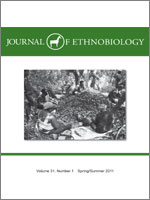The Pacific Coastal Mountains of western North America have immense ethnobotanical significance. Since time immemorial, Indigenous Peoples have journeyed from permanent settlements in lowland regions to upland sites in order to harvest and process a range of plant resources –foods, materials and medicines– as well as to hunt and fish, and undertake spiritual activities. Two culturally significant montane areas, widely separated geographically, are described as case examples: pt-én'i (Botanie Valley) in Nlaka'pmx territory of southern interior British Columbia, famous for its abundance of edible root resources; and iwamkani, an iconic huckleberry picking location for the Klamath in southern Oregon. Patterns of montane use are notably consistent throughout the region. Indigenous People intentionally modified montane landscapes through fire and other means to enhance resource productivity and predictability. In turn, mountain environments and resources have significantly influenced Indigenous Peoples' lifeways and knowledge systems. The integrity of montane biocultural systems has been threatened by industrial development, fire suppression and, most recently, the changing global climate. Yet, montane areas remain as key elements of biocultural heritage and must be protected for continued social-ecological health and well-being of Indigenous Peoples.
How to translate text using browser tools
1 March 2011
“Up On the Mountain”: Ethnobotanical Importance of Montane Sites In Pacific Coastal North America
Nancy J. Turner,
Douglas Deur,
Carla Rae Mellott

Journal of Ethnobiology
Vol. 31 • No. 1
Spring/Summer 2011
Vol. 31 • No. 1
Spring/Summer 2011
ethnobotany
INDIGENOUS PEOPLES
Montane
Pacific Coast Mountains
Subalpine
traditional land management




